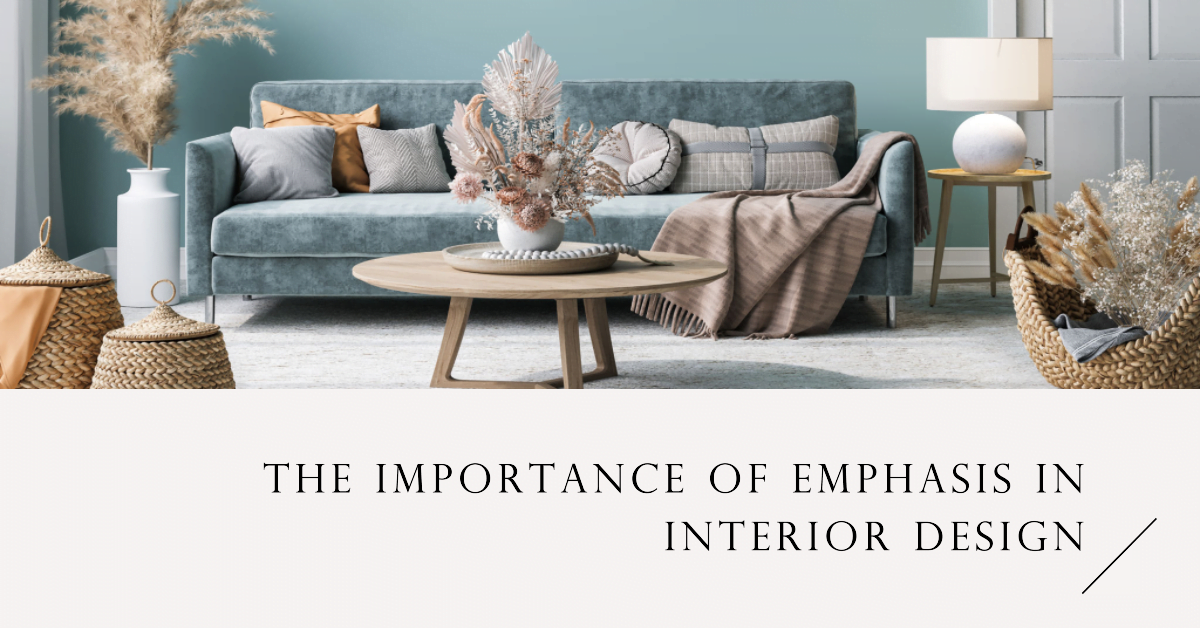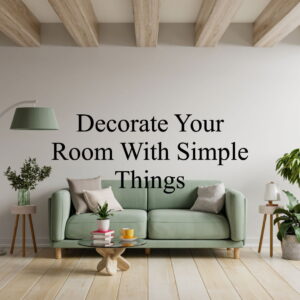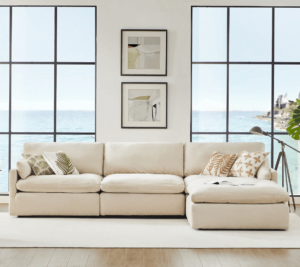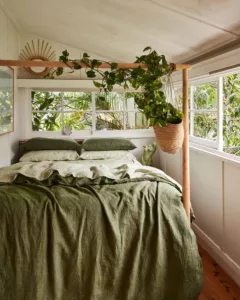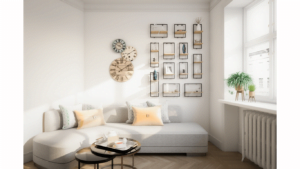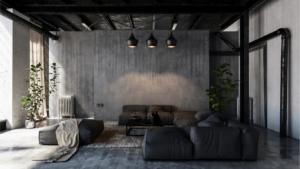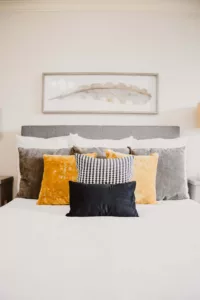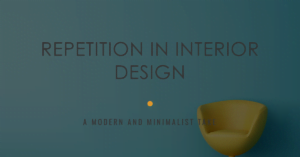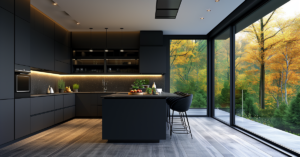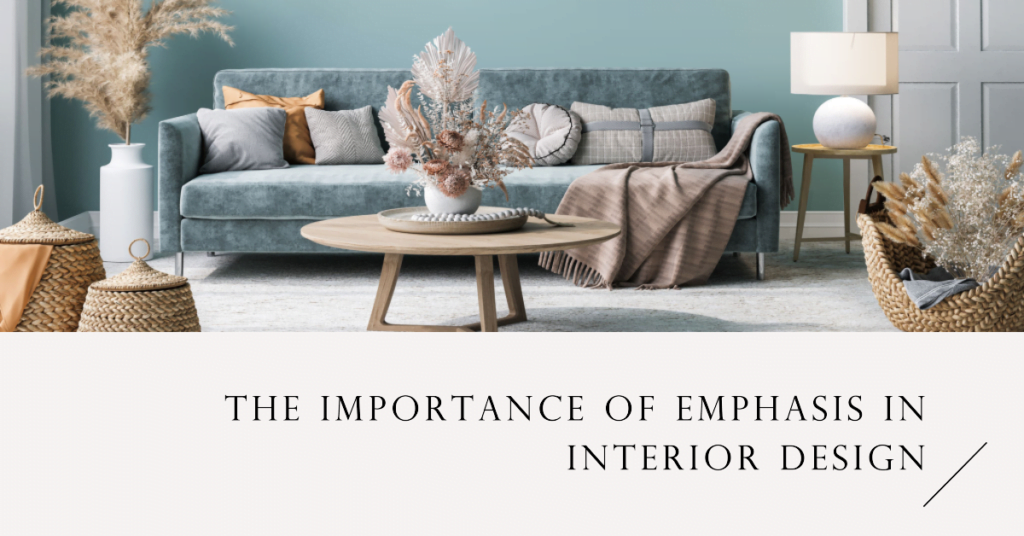
As an interior designer, I’ve learned that the secret to creating a truly engaging space lies in mastering the art of emphasis. It’s the key to orchestrating visual harmony and balance, ensuring that every room we design is both captivating and functional.
In the world of interior design, emphasis is all about highlighting specific elements in a room, creating a focal point that guides the viewer’s eye. Think of it as a carefully placed spotlight that helps us navigate through the space, effortlessly drawing our attention to the most important features.
Emphasis is crucial in interior design, as it forms the backbone of every well-composed space. It’s like the punctuation in a well-written sentence, providing order and purpose to the room. A well-placed focal point gives character and voice to the space, making it unique and inviting.
When used effectively, emphasis can truly transform a room’s mood and atmosphere. A strategically chosen focal point can set the stage for a beautiful interior, beckoning people to interact with the space. Be it a vibrant pop of color, an alluring piece of art, or a striking pattern, emphasis breathes life into a room, making it come alive.
In the sections to follow, we’ll take a closer look at the many ways emphasis can be used to create stunning interiors. We’ll explore the principles and strategies that can turn an ordinary room into an extraordinary one. So, join me on this exciting journey as we unlock the secrets of emphasis in interior design.
Understanding Emphasis in Interior Design
Before we delve deeper into the world of emphasis in interior design, it’s important to have a clear understanding of what it is and how it plays a vital role in shaping our spaces.
Emphasis, at its core, is the strategic highlighting of certain elements in a room to create a focal point or points. These focal points guide the viewer’s eye, helping them navigate the space and appreciate the overall design. Emphasis in interior design is like the conductor of an orchestra, directing the visual flow and ensuring all elements work together in harmony.
There are several principles of emphasis in interior design that can be leveraged to create a compelling space. Some of the key principles include:
- Contrast: Using opposing elements, such as colors, shapes, or textures, to create visual interest and draw attention to specific areas.
- Scale and proportion: Manipulating the size and relationship of objects within a space to create a sense of hierarchy and importance.
- Repetition and rhythm: Utilizing repeating patterns or motifs to create visual consistency and draw the eye towards a focal point.
- Balance: Ensuring a sense of equilibrium within the space, either through symmetrical or asymmetrical arrangements of elements.
To illustrate the power of emphasis in interior design, let’s consider a few examples:
- A stunning chandelier in a dining room: Suspended above the dining table, an eye-catching chandelier becomes the room’s focal point, drawing attention and providing a sense of grandeur.
- A bold accent wall: A vibrant or textured accent wall in a living room can create a strong visual statement, making the space feel dynamic and engaging.
- An artful arrangement of family photos: A carefully curated gallery wall can serve as a focal point in a hallway or living space, showcasing cherished memories and personal style.
By understanding elements and principles of design and how it functions in interior design, we can begin to unlock the potential of our spaces, creating rooms that are both visually captivating and expertly composed.
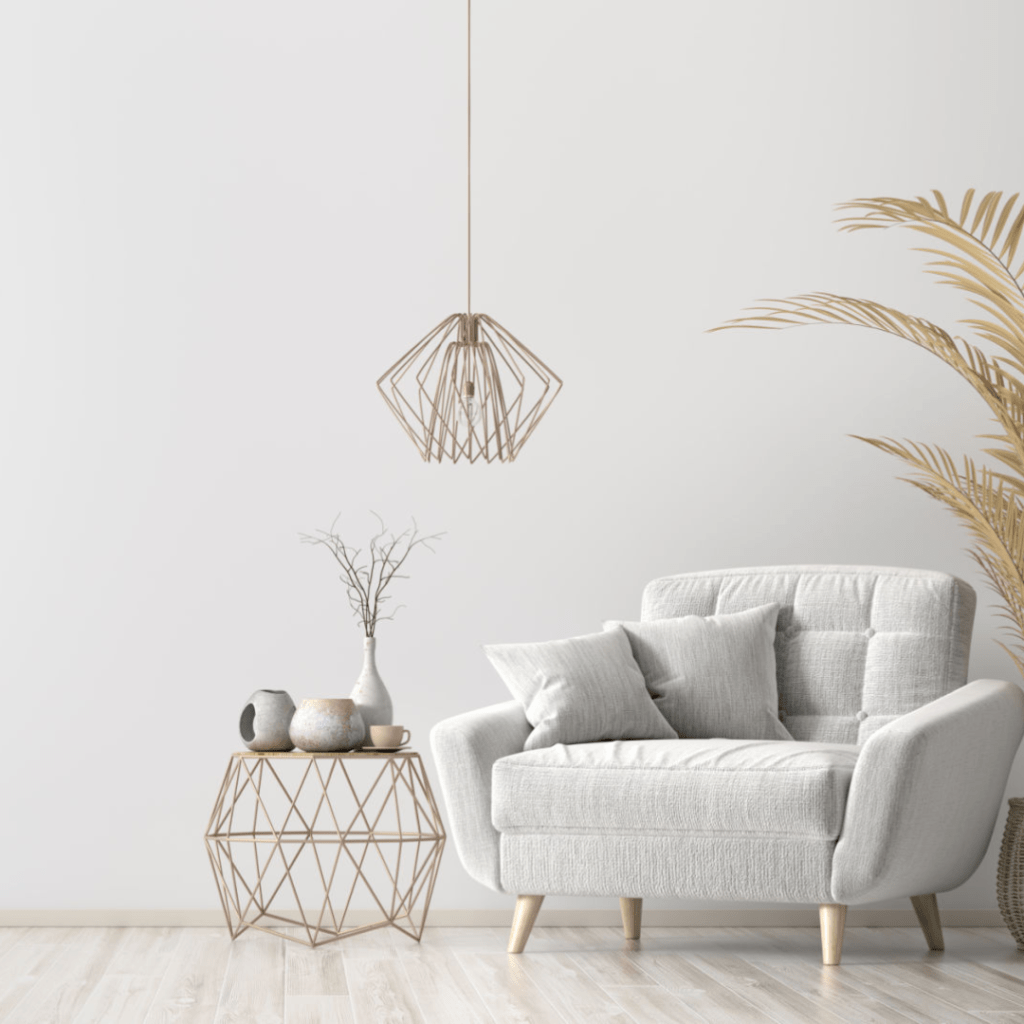
Creating Emphasis in Interior Design
Now that we have a solid understanding of emphasis and its role in interior design, let’s explore some practical ways to create emphasis in our spaces. There are several methods and strategies we can employ to ensure our designs are engaging and well-composed.
Here are five ways to create emphasis in a design:
- Color: Using bold or contrasting colors can immediately draw attention to a specific area or object in a room. For example, a brightly colored accent chair in an otherwise neutral space can make a striking statement.
- Texture: Incorporating a variety of textures can create visual interest and depth, drawing the eye to specific elements within the space. Consider using a textured peel and stick removable wallpaper, a plush rug, or tactile fabrics to create emphasis.
- Shape: Unique or unexpected shapes can serve as a strong focal point in a room. An unusually shaped coffee table or a sculptural light fixture, for instance, can command attention and add intrigue.
- Size: Playing with scale can create emphasis and a sense of hierarchy within a space. An oversized piece of artwork or a large, dramatic mirror can immediately become the centerpiece of a room.
- Placement: Thoughtful arrangement of elements within a room can help guide the viewer’s eye to a specific focal point. For example, arranging furniture to face a fireplace or a stunning view can create emphasis and a sense of purpose within the space.
| Technique | Description |
|---|---|
| Color | Use bold or contrasting colors to draw attention to a specific element or area in a space. |
| Texture | Add visual interest and depth by using various textures to emphasize a particular element. |
| Shape | Utilize unique or contrasting shapes to make certain design elements stand out. |
| Size | Make a statement with larger-than-life or significantly smaller elements to create a focal point. |
| Placement | Arrange elements in a way that draws the viewer’s eye to a specific location or feature. |
| Contrast | Create emphasis through differences in color, size, shape, or texture between adjacent elements. |
| Isolation | Separate a particular element from the rest of the space to make it stand out. |
| Convergence | Use lines, shapes, or forms that guide the viewer’s eye toward a specific focal point in the space. |
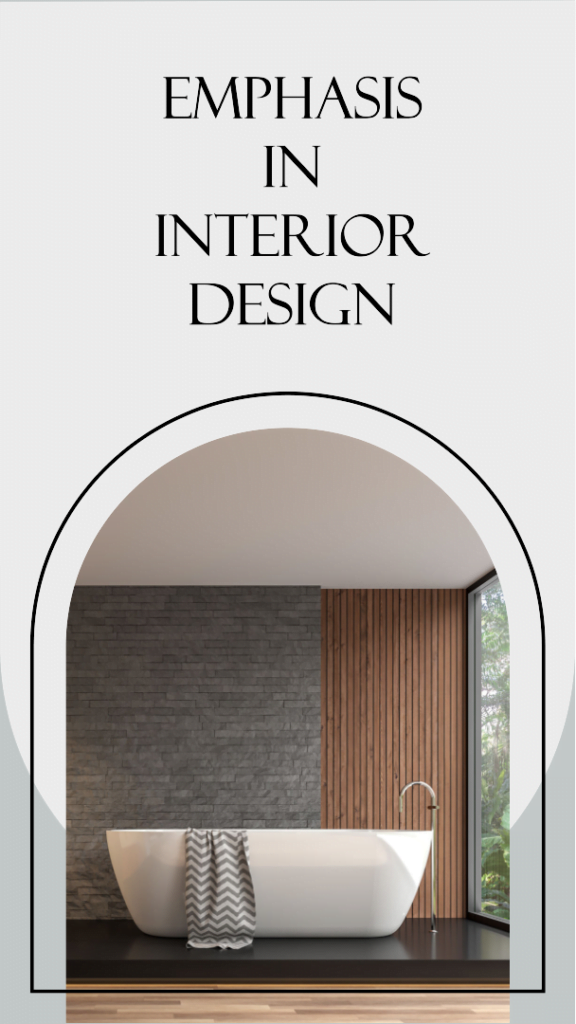
In addition to these methods, there are four emphasis strategies that can be employed to create a captivating interior:
- Contrast: As mentioned earlier, using opposing elements such as colors, shapes, or textures can create visual interest and emphasize specific areas or objects.
- Isolation: By allowing ample space around an object or element, you can create emphasis through isolation, making it the star of the show.
- Placement: Positioning elements in a way that naturally draws the eye, such as using the rule of thirds or placing items at varying heights, can create emphasis through strategic placement.
- Convergence: Arranging elements so that they visually converge at a single point can help create emphasis and guide the viewer’s eye to a specific focal point.
How to use emphasis to create a focal point in a room, which can be achieved through various methods, as explained in this guide on creating a focal point in interior design, consider which of the methods and strategies mentioned above would work best in your space. Identify the element you want to highlight, then employ the appropriate techniques to draw attention to it.
For maximum impact, emphasis should be placed on the most important or visually appealing aspects of the room. This could be an architectural feature, a statement piece of furniture, or a stunning work of art. Ultimately, the placement of emphasis should complement and enhance the overall design, creating a cohesive and engaging space.
In the next section, we’ll explore the effects of emphasis on design and how it relates to other design principles.
The Effects of Emphasis on Design
Having explored the various ways to create emphasis in interior design, let’s now delve into the effects of emphasis on design and how it interacts with other design principles. Understanding the relationship between emphasis and other design principles will enable us to create spaces that are not only visually captivating but also harmonious and well-balanced.
The following are some key design principles that relate to emphasis:
- Contrast: As previously mentioned, contrast plays a significant role in creating emphasis by using opposing elements to draw attention to a specific area or object. It also contributes to visual interest and depth in a design.
- Proportion: Proportion refers to the size and relationship of objects within a space. Emphasis can be used to create a sense of hierarchy and importance, ensuring that all elements are proportionate and contribute to a cohesive design.
- Balance: Achieving balance in a design involves creating a sense of equilibrium, either through symmetrical or asymmetrical arrangements of elements. Emphasis can help establish balance by guiding the viewer’s eye and ensuring the weight of the design is evenly distributed.
- Rhythm: Rhythm in design is created through the repetition of elements or patterns, which can lead the eye towards a focal point. Emphasis and rhythm often work together to create visual consistency and harmony within a space.
- Unity: Unity is the sense of cohesion and harmony in a design, ensuring that all elements work together to create a pleasing whole. Emphasis can contribute to unity by establishing a clear focal point and purpose within the space.
Now that we have explored the relationship between emphasis and other design principles, we can better understand how to create interiors that are both engaging and harmonious. By skillfully employing emphasis alongside other design principles, we can craft spaces that are visually captivating, functional, and balanced.
In the next section, we will discuss practical ways to use emphasis in interior design, focusing on the best areas for emphasis and how to create impactful focal points within a room.
Using Emphasis in Interior Design
Armed with a deep understanding of emphasis and its relationship with other design principles, we can now explore practical ways to use emphasis in interior design. In this section, we will focus on identifying the best areas for emphasis and creating impactful focal points within a room.
Here are some tips on how to use emphasis in interior design:
- Identify the most important or visually appealing aspects of the room: Consider the architectural features, statement pieces of furniture, or stunning works of art that you want to draw attention to. These elements can serve as the foundation for your focal points.
- Choose the appropriate methods and strategies: Based on the element you want to emphasize, select the most suitable methods and strategies that we discussed above. For instance, use color, texture, shape, size, or placement to create emphasis, and employ contrast, isolation, placement, or convergence as emphasis strategies.
- Consider the overall design: Ensure that your chosen emphasis complements and enhances the overall design of the space. The emphasis should be well-integrated with other design principles, such as contrast, proportion, balance, rhythm, and unity, to create a cohesive and engaging room.
- Experiment with different emphasis techniques: Don’t be afraid to try different methods and strategies to find the perfect balance of emphasis for your space. Sometimes a bold statement piece may be all you need, while other times, a subtle play of textures or colors can create the desired effect.
When deciding where to place emphasis for maximum impact, consider the following areas:
- Architectural features: Draw attention to unique or visually appealing architectural features, such as a fireplace, built-in bookshelves, or large windows with stunning views.
- Artwork: Showcase a beautiful piece of art or a carefully curated gallery wall to create a focal point and personalize the space.
- Furniture: Use statement pieces of furniture, such as a bold sofa, an accent chair, or a sculptural coffee table, to create emphasis and anchor the room.
- Lighting: Employ dramatic or sculptural lighting fixtures, like chandeliers or pendant lights, to draw the eye upward and add visual interest.
By strategically placing emphasis in your interior design, you can create spaces that are not only visually captivating but also functional and harmonious. The key is to understand the principles of emphasis and how they interact with other design elements to craft interiors that are both engaging and well-balanced.
In the conclusion, we’ll summarize the importance of emphasis in interior design and recap the principles and strategies for creating emphasis in a room. We’ll also discuss the benefits of using emphasis to create a mood and atmosphere in a space.
FAQ
What is emphasis in interior design?
Emphasis in interior design refers to the visual weight or importance given to specific elements in a space, creating a focal point and guiding the viewer’s eye through the room.
Why is emphasis important in interior design?
Emphasis is important in interior design because it helps establish a clear sense of hierarchy, ensuring that the most important aspects of the space are highlighted. It also helps create a mood and atmosphere in a room that reflects the designer’s unique style.
How can I create emphasis in interior design?
You can create emphasis in interior design by using methods such as color, texture, shape, size, and placement. Additionally, you can employ emphasis strategies like contrast, isolation, placement, and convergence to draw attention to specific elements in the space.
What are the main design principles that relate to emphasis?
The main design principles that relate to emphasis include contrast, proportion, balance, rhythm, and unity. Understanding the relationship between emphasis and these principles helps create spaces that are visually captivating, functional, and harmonious.
How can I use emphasis to create a focal point in a room?
To create a focal point using emphasis, identify the most important or visually appealing aspect of the room and use appropriate methods and strategies to draw attention to it. This can include using color, texture, shape, size, or placement, as well as emphasis strategies like contrast, isolation, placement, and convergence.
Where should I place emphasis for maximum impact?
To place emphasis for maximum impact, consider areas such as architectural features, artwork, statement furniture pieces, or dramatic lighting fixtures. These elements can serve as the foundation for your focal points, adding visual interest and personality to your space.
Can I use multiple emphasis points in a room?
Yes, you can use multiple emphasis points in a room, but it’s essential to maintain a sense of balance and hierarchy. Too many focal points may lead to visual clutter, making it difficult for the viewer’s eye to navigate the space. Carefully select and arrange emphasis points to create a harmonious and engaging design.
Conclusion
Throughout this article, we’ve explored the importance of emphasis in interior design, highlighting its role in crafting visually captivating and harmonious spaces. Emphasis serves as a guiding force in design, directing the viewer’s eye and establishing clear focal points that enhance the overall aesthetic and functionality of a room.
We’ve delved into the principles and strategies for creating emphasis, including employing methods such as color, texture, shape, size, and placement, as well as emphasis strategies like contrast, isolation, placement, and convergence. By using these techniques, we can create impactful focal points that elevate our interior designs and create a sense of purpose within a space.
Moreover, we’ve discussed the relationship between emphasis and other design principles, such as contrast, proportion, balance, rhythm, and unity. Understanding these interactions allows us to create spaces that are not only engaging but also well-balanced and harmonious.
The benefits of using emphasis in interior design go beyond simply creating visually appealing spaces. By skillfully employing emphasis, we can evoke moods and atmospheres that transform our spaces into reflections of our personalities and the experiences we wish to share within them.
In summary, the importance of emphasis in interior design cannot be overstated. By mastering the principles and strategies of emphasis, we can unlock the potential of our spaces, creating interiors that are visually captivating, functional, and a true expression of our unique design sensibilities.

